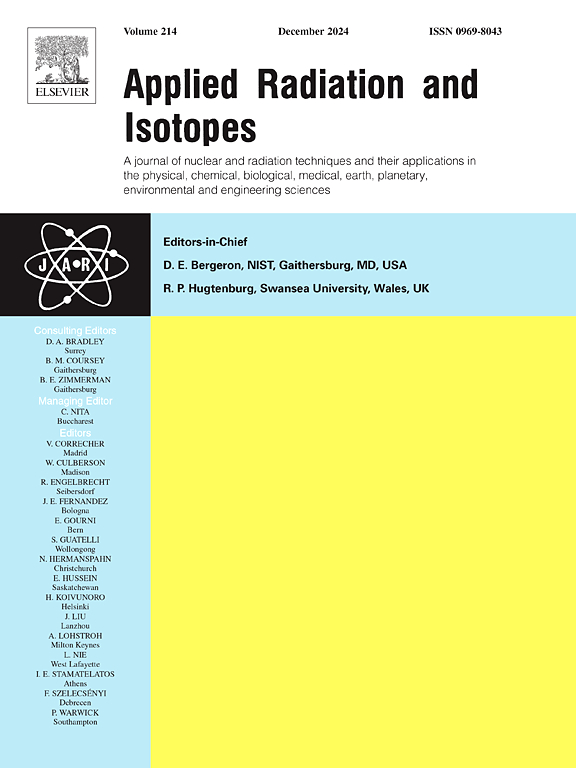Annual effective dose assessment: Natural background gamma radiation at Kothapally village, Nalgonda district, Telangana, India
IF 1.6
3区 工程技术
Q3 CHEMISTRY, INORGANIC & NUCLEAR
引用次数: 0
Abstract
The annual effective dose due to natural background gamma and radionuclides in soil samples was estimated in the indoors and outdoors of Kothapally village located in the vicinity of proposed Chitrial Uranium mineralized area. In the present study μR-survey meter and Thermoluminescence dosimeters (TLDs) were used for instantaneous and integrated measurements of natural background gamma radiation levels respectively. The annual effective dose to the general public, was found to be vary from 0.92 to 2.26 with an average value of 1.39 ± 0.23 mSv.y−1 (GM = 1.37 mSv.y−1) using μR survey meter, and varied between 0.6 and 1.4 with an average value of 1.0 ± 0.2 mSv.y−1 (GM = 1.0 mSv.y−1) using the TLDs. The annual effective dose is also estimated from the collected soil samples and it is found to be vary between 1.0 and 2.0 mSv.y−1 with an average value of 1.13 ± 0.12 mSv.y−1 (GM = 0. 96 mSv.y−1). The external and internal hazard index parameters from the radioactive elements subsist in the soil samples of the study area, and the ratio between the indoor and outdoor natural background gamma radiation levels, and their distribution in the indoors and outdoors, also to be discussed in this paper.
求助全文
约1分钟内获得全文
求助全文
来源期刊

Applied Radiation and Isotopes
工程技术-核科学技术
CiteScore
3.00
自引率
12.50%
发文量
406
审稿时长
13.5 months
期刊介绍:
Applied Radiation and Isotopes provides a high quality medium for the publication of substantial, original and scientific and technological papers on the development and peaceful application of nuclear, radiation and radionuclide techniques in chemistry, physics, biochemistry, biology, medicine, security, engineering and in the earth, planetary and environmental sciences, all including dosimetry. Nuclear techniques are defined in the broadest sense and both experimental and theoretical papers are welcome. They include the development and use of α- and β-particles, X-rays and γ-rays, neutrons and other nuclear particles and radiations from all sources, including radionuclides, synchrotron sources, cyclotrons and reactors and from the natural environment.
The journal aims to publish papers with significance to an international audience, containing substantial novelty and scientific impact. The Editors reserve the rights to reject, with or without external review, papers that do not meet these criteria.
Papers dealing with radiation processing, i.e., where radiation is used to bring about a biological, chemical or physical change in a material, should be directed to our sister journal Radiation Physics and Chemistry.
 求助内容:
求助内容: 应助结果提醒方式:
应助结果提醒方式:


